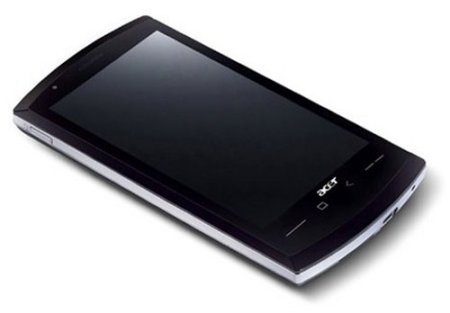
Like a brilliant sergeant leading a squad of slackers, Google Android has never been the weak link in most of the smartphones it ends up on. As AnandTech editor in chief Anand Shimpi once so thoughtfully pointed out, every Android on the market today uses the same relatively anemic processor. Hence the load times, sometimes choppy scrolling, and other manifestations of sloth. But not for long.
On Wednesday, Acer showed off the upcoming Liquid, formerly known as the A1, which will use the impressive Snapdragon 1GHz processor from Qualcomm. Although HTC has already announced that it will plant the same chip in the HD2, Acer has been the first to firm up plans to mate it with Android 1.6 “Donut.” That’s quite a leap from the 2003-era 528MHz processors driving phones like the HTC MyTouch and T-Mobile G1.
Acer hasn’t revealed many other hardware specifics for the Liquid, but we do know it will offer a 3.5-inch WVGA touch screen (800 x 480) and sophisticated camera with geo-tagging, ISO adjustment, self-timer options and accelerated auto-focus performance, plus tweaked user interface for Android. That will include “Spinlets,” which Acer very vaguely states will provide free streaming of music and video.
Despite the organic-sounding name, the Liquid will take on a fairly bland tablet shape with elliptical curves on either end, similar in some ways to the Archos 5. At launch, it will come in red, white and black. Acer hasn’t yet revealed when the hopped-up Android phone will see the light of day, or which carrier it will arrive on, but given the upcoming availability of the similarly HTC HD2, “soon” wouldn’t be a bad bet. More information can be found at Acer.
Editors' Recommendations
- How to find your phone number on iPhone or Android
- The Google Pixel 8a price just leaked. Here’s how much it’ll cost
- The best Android tablets in 2024: the 11 best ones you can buy
- Every Android tablet we’re expecting in 2024
- This Android phone is a surprisingly great buy at $100

